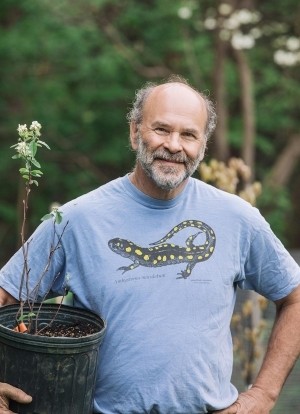
Russ Cohen has been eating wild foods since he was a child. What started as casual family foraging outings developed into a full-fledged obsession in high school. After earning a master’s degree in Natural Resources and a law degree from Ohio State University, Cohen returned to Massachusetts and worked for the state’s Riverways Program for more than 25 years (retiring in 2015), as well as for The Nature Conservancy and the Massachusetts Audubon Society. He leads dozens of natural edible food walks and talks each year and has begun a nursery to propagate edible species native to New England. His 2004 book, Wild Plants I Have Known…and Eaten, is in its eighth printing, and sales benefit the Essex County Greenbelt Association.
I grew up on a dead-end street in Weston, Massachusetts, a suburb of Boston. The neighborhood is surrounded by woods, and that’s where I played as a kid. Often, the story is about people who played in the woods as kids, and the woods got developed and aren’t there anymore. But as much as 90 percent of the woodlands that I played in are still here. Part of it is conservation land owned by the town, part of it is our own family land, part of it is the woodlands surrounding an adjacent golf course. But it’s all still here, wonderfully. I used to ride my Royce Union one-speed, balloon-tire bicycle on the trails here. This was in the 1960s, before mountain biking was a thing, but I was already doing it. I would mark my own trails and blaze the trails with paint, and a lot of those trails are still in existence and used by people that come and walk in this neighborhood.
I was one of these kids that got picked on a lot as a child, so I spent a lot of time in the woods by myself. I found woods to be a very comforting presence. Kids that grow up in the city and they’re really comfortable hanging out on the corner – put them in the woods and they’re completely disoriented and lost and scared. I was the opposite. I went to summer camp in Maine, mostly with kids from more suburban and urban places. When we went on hiking trips, that’s when I got to shine, because I had a comfort in the woods, and I knew how to gather firewood and start fires and how to find wild berries to pick.
Between my sophomore and junior years of college, I took a minicourse called Plants in Relationship to Their Environment at the Harvard Forest in Petersham. At the end of the course, we had to do a term paper, and one day I woke up and not only did I know what my term paper was going to be about, but I saw my whole career lying before me like Moses looking at the Promised Land. Thenceforth, all my coursework, all my term papers, my graduate study – all this stuff was done with this vision, which was conserving natural areas. Not so much for the ecological reasons, but for the human reasons. I realized that the woods I played in as a kid had such a profound and salubrious effect on my character that I just felt that it was important to help save open space so that this was available to other people too.
I did a fair amount of foraging with my family for things that grew nearby, like wild grapes and crabapples and shagbark hickories. Right down the hill lived a retired English pediatrician by the name of Dr. Bill Elliston. He’s well known and revered in this town, because he was the father of conservation here. Weston became subject to a lot of post-World War II development. He was there to help start the land trust – The Weston Forest and Trail Association – and help steer a lot of development away from the sensitive areas and keep the town’s trail system intact. He would lead monthly walks on those trails. I would go on these walks and learn the woods lore and some of the edible plants from him. He was kind of like my conservation godfather.
When I was a sophomore at Weston High School, I took a six-week course called Edible Botany. We learned about two dozen species of plants that grew around the high school, and then we made a communal meal from these plants we had learned about. That was the spark that ignited this lifelong passion I have. That summer, I went to the town library and took out every book I could find on the topic, and I taught myself over 70 more species. And by senior year of high school, I was teaching that class I had taken as a sophomore.
I did foraging walks in college. I would put up signs near the entrance of the cafeteria saying, if you’re not thrilled with this cafeteria food, follow me around campus, and I can show you all the things you can nibble on. I didn’t lead so many walks during grad school in Ohio, but I still happily foraged and connected to the outdoors through my tastebuds there. It was when I moved back to New England in the late 1980s that I started teaching on a more regular basis. Until the pandemic happened, I was doing at least three dozen in-person walks and talks every year, connecting people to the outdoors through their taste buds, throughout New England and in eastern New York state. I love to share my enthusiasm for the subject.
Shagbark hickory is my number one favorite wild edible out of everything – out of native species, non-native species, invasive species. The nuts of shagbark hickory taste like walnuts that have been lightly sprayed with maple syrup. Among people that know, there’s pretty much consensus that the shagbark hickory nut is our tastiest wild nut, and perhaps even our tastiest nut, period. It’s a native species and grows in all six New England states. You’re not going to find it surrounding Fourth Connecticut Lake way up in the headwaters of the Connecticut River, but in most of the lower elevation places you can find it. For example, there’s a ton of it in Chittenden County, Vermont, where Burlington is. It is my belief, although it’s a little hard to prove, that Native Americans planted it there because they liked it so much.
Shagbark hickories have this very distinctive shaggy bark, and it really stands out. My radar is on all the time, whenever I’m traveling around. I still have those old fashioned road atlases in my car, and if I see a stand of shagbark hickory trees, I’ll pull over and get those atlases out and make a big X on the map where those trees are located and scribble in “hickory trees” so that I remember that spot. My wife says that I’m kind of like a bear, because I have a very deep memory of all the good places to go gather things.
Most of the foraging I do is not way off in the middle of the wilderness. It’s actually near where human habitation is, because that’s where a lot of the sunny edges are. So, on the edge of a farm field, for example, or the edge of a bike path, or the edge of a school ballfield, where you have the edge of the woods, where the plants are getting a lot of light. That’s where you’re going to find a lot of good fruit trees, nut trees, berry bushes, stuff like that.
I feel such a gratitude to Mother Nature for putting all these wonderful things out that I’ve been nibbling on all these years. A number of years ago, it occurred to me that I should be giving back to Mother Nature by helping to plant more things out there just to make the landscape more edible. I started with shagbark hickory. In a typical season, most of the nuts I gather are saved for eating, but I set aside a good amount for propagating new trees, either by me, or I pass the nuts along to other people to grow shagbark hickory trees.
There are over 180 species native to New England ecoregions that are edible by people. It’s a pretty big palate to work with. I haven’t figured out how to grow everything yet, but I’ve figured out how to grow a good third of those species. Part of my nursery is at my mom’s house, where I grew up, and part of it is at Dr. Elliston’s house down the street. His granddaughter now lives in that house and has a flower farm, and she allows me to use it as part of my nursery.
It’s been really fun as an adjunct for the foraging I was doing, to do the seed collection, too. In some cases, it’s one and the same. So, if I’m gathering shagbark hickory nuts, it’s the nuts that you eat, and it’s the nuts that you propagate trees from. In some cases, though, it’s a different thing. So, if I’m gathering wild fruit, I’m eating the flesh around the fruit, but it’s the seed or the pit inside that you save to propagate plants from. For many years, I would just throw the seeds in my compost pile, but now, if it’s a native edible plant, I’m saving that seed and propagating plants from that seed. Or I’m sharing it with other people.
I’ve got over 1,000 plants now. I grow them here, and then I work out arrangements with different groups – like Audubon societies, land trusts, organic farms, tribal groups, municipalities, state agencies – to plant plants from my nurseries in appropriate places on their properties. I’ve done at least two dozen projects so far, including at least half a dozen in the northern woodlands. When I walk a landscape, in my mind I say, I think this particular species – which isn’t there yet – would be happy if I planted it in that particular spot. It is so gratifying when you visit one of your planting sites and see that you guessed correctly.
Depending on the time of the year, I may have a favorite place based on what happens to be in season. Right now, in October, is when shagbark hickories are dropping their nuts, so I’m very fixated on that, and I’m going to places where that’s available. But if you ask me my favorite place to go in June, I might have a different answer for you than I would now. There are edible wild plants all over, whether you’re in the city or in the mountains or along the seacoast. There’s just good stuff all over the place.


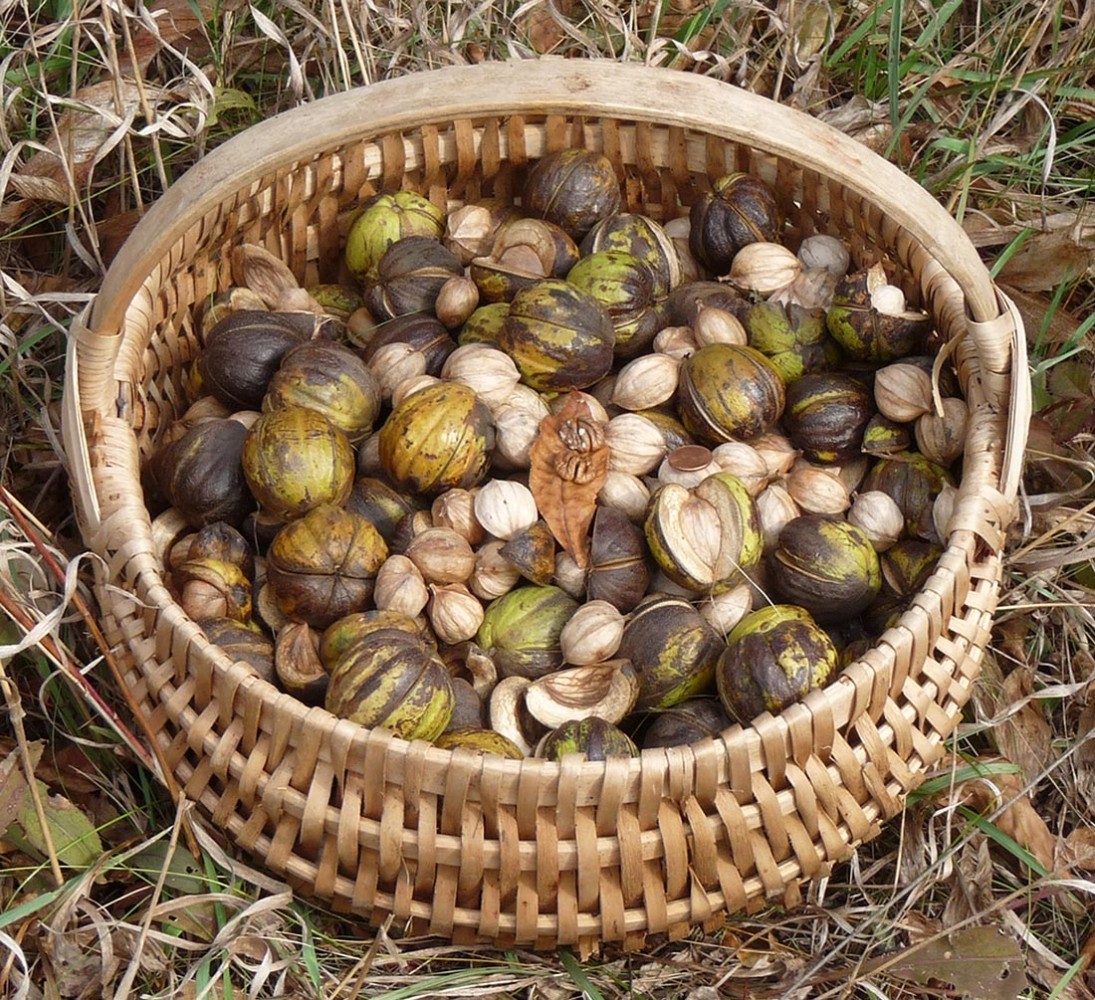
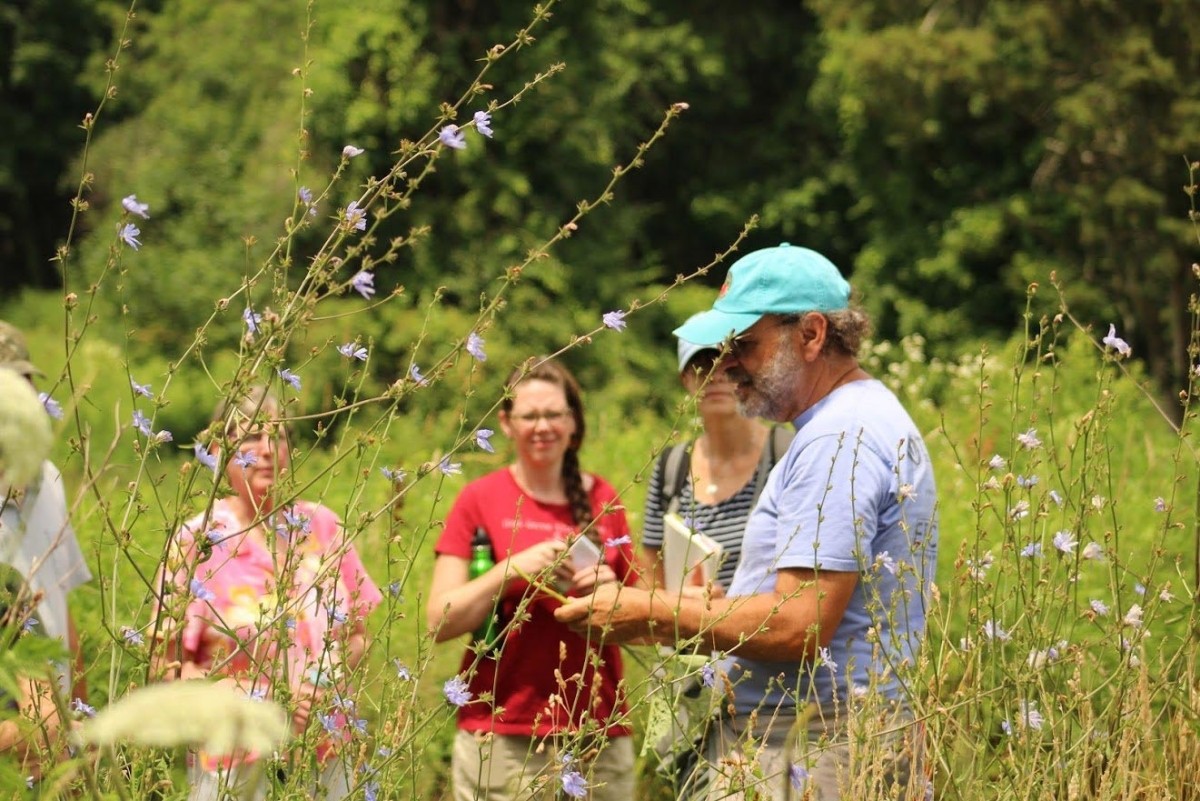
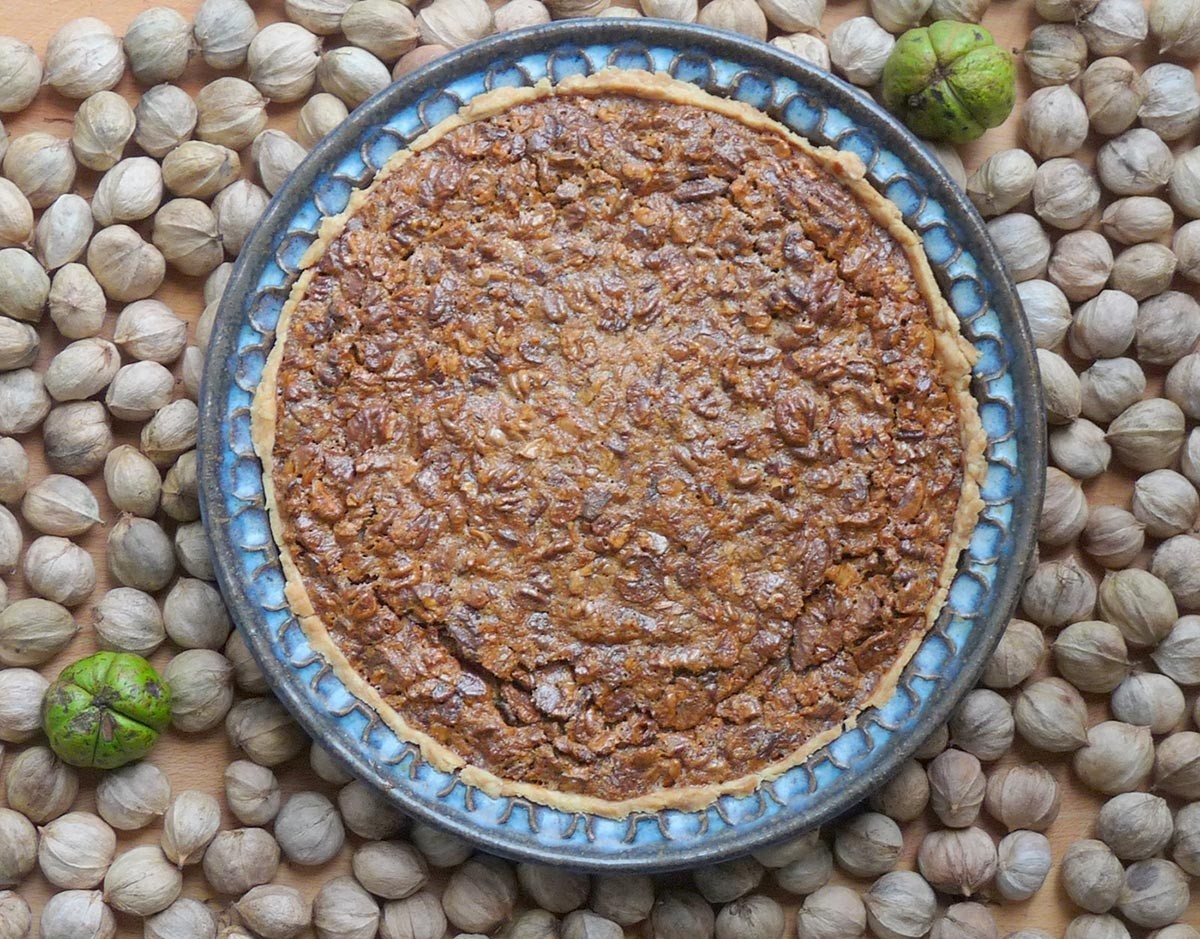
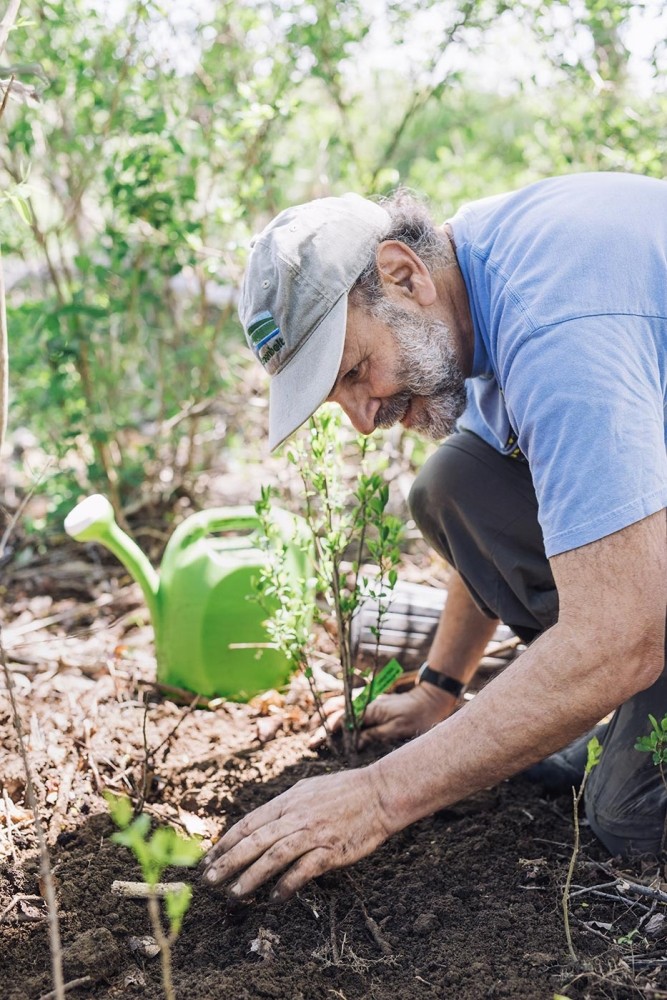
Discussion *